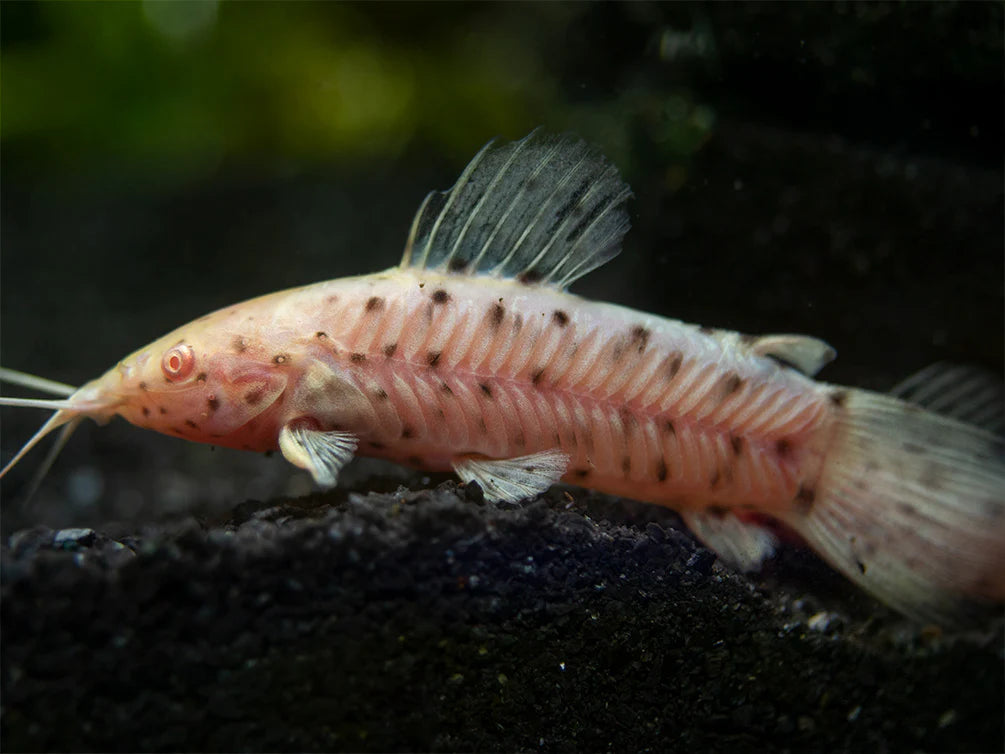Top Fin Aquatics
Albino Hoplo Catfish
Albino Hoplo Catfish
Couldn't load pickup availability
The Albino Hoplo Catfish (Megalechis thoracata) is a fascinating species from South America known for its peaceful nature and manageable size. It can be kept with community fish as well as larger, more aggressive species.
Native to northern South America, this medium-sized catfish has been popular in aquariums for many years due to its hardiness, calm demeanor, and unique markings. It’s too large for nano tanks but fits well in medium to large aquariums, especially those designed around Amazon setups with cichlids or tetras. The albino variety is relatively rare and displays impressive coloration.
Although the Albino Hoplo Catfish is a social species, it can also thrive as a single specimen. It's somewhat shy and requires plenty of hiding spots like driftwood, pipes, or crevices, though it tends to be more active in a group. Multiple fish may even share the same hideout. While it’s not territorial or aggressive, like most catfish, it may prey on anything small enough to fit in its mouth, such as tiny fish, shrimp, or fry. It’s plant-friendly and prefers calm to moderate water flow. Since it enjoys digging for food, a substrate of sand or fine gravel is ideal.
Feeding this catfish is straightforward. In the wild, it feeds on small invertebrates, and in the aquarium, it will accept most live, frozen, and dry meaty foods. Including some plant-based food, like spirulina, is recommended. It has a strong appetite, so avoid overfeeding. Placing food near its hiding spot works well, but it will eagerly come out when food is present.
Key Highlights:
- Beautiful pink and black markings
- Peaceful with anything too large to be eaten
- Great scavenger
- Doesn’t harm plants
- Rare captive-bred variety
Recommended Tank Parameters:
- Temperature: 64° - 82°F (18° - 28°C)
- pH: 6.0 - 8.0
- KH: 2 - 20 dKH
- Minimum tank size: 55 gallons for a small group
Care Guidelines:
- Diet: Omnivore, accepts most dry, frozen, and live meaty foods
- Social behavior: Peaceful, nocturnal, somewhat social
- Origin: Captive-bred, native to Northern South America
- Adult size: 6 inches (15 cm)
- Purchase size: 1.5 inches (3.8 cm)
Share


